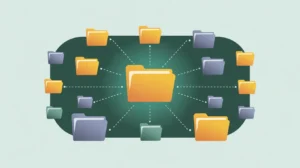Importance of Generally Accepted Accounting Principles (GAAP)
GAAP provides a standardized framework for preparing and presenting financial statements, ensuring consistency, comparability, and credibility across organizations. This matters because donors, regulators, and boards rely on reliable financial data to assess stewardship and performance. For nonprofits in social innovation and international development, GAAP ensures that financial reporting meets professional standards, which is often a prerequisite for securing major grants and contracts. Boards and leadership value GAAP compliance because it reduces risk, enhances transparency, and supports decision-making.
Definition and Features
Generally Accepted Accounting Principles (GAAP) are defined as the set of accounting standards, principles, and procedures used in the United States to guide financial reporting. Key features include:
- Standardization: ensures all organizations follow the same reporting rules.
- Principle-Based: covers concepts like accrual accounting, consistency, and prudence.
- Nonprofit-Specific Guidance: includes rules for contributions, restricted funds, and functional expenses.
- Regulatory Basis: governed by the Financial Accounting Standards Board (FASB).
GAAP differs from IFRS (International Financial Reporting Standards) because it is U.S.-based and sometimes more rules-oriented.
How This Works in Practice
In practice, nonprofits follow GAAP when preparing annual audited financial statements. For example, GAAP requires contributions with donor restrictions to be reported separately from unrestricted income, ensuring transparency in how funds are used. Finance teams ensure compliance by applying GAAP standards in daily accounting, while auditors test adherence in financial reviews. Boards and finance committees often receive training to understand GAAP-based reports.
Implications for Social Innovation
For nonprofits in social innovation and international development, GAAP compliance demonstrates professionalism and accountability to donors, funders, and partners. Transparent reporting under GAAP reduces information asymmetry by clearly distinguishing between restricted and unrestricted resources, expenses, and net assets. Donors value GAAP-compliant reports as a sign of strong governance, while nonprofits benefit from easier fundraising, reduced audit risk, and stronger credibility. By adhering to GAAP, organizations reinforce trust and position themselves to scale systemic change with confidence.







